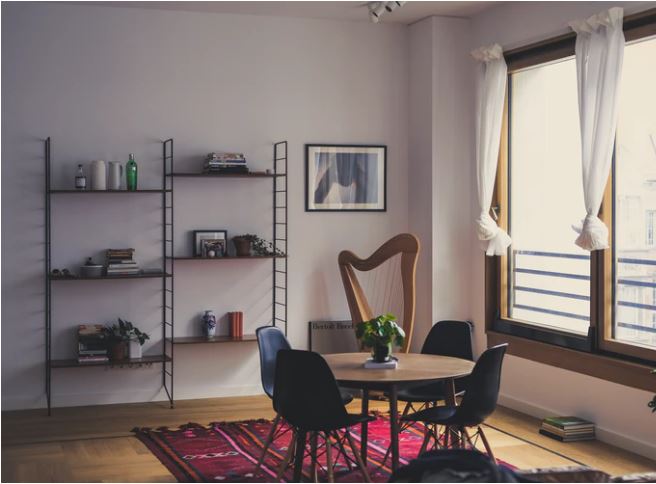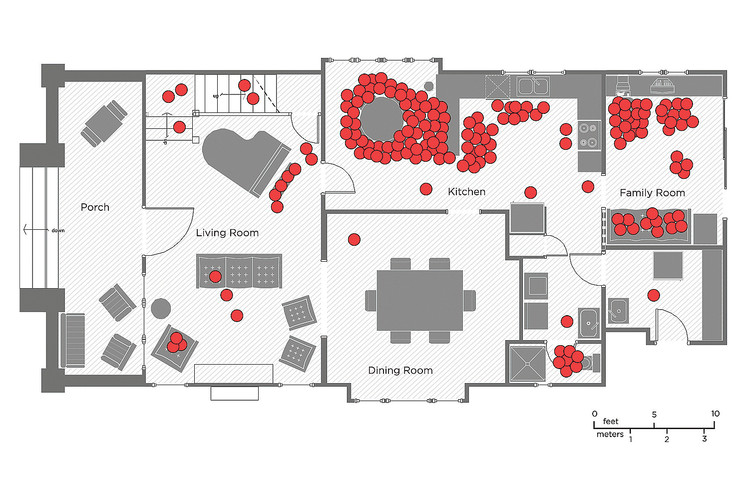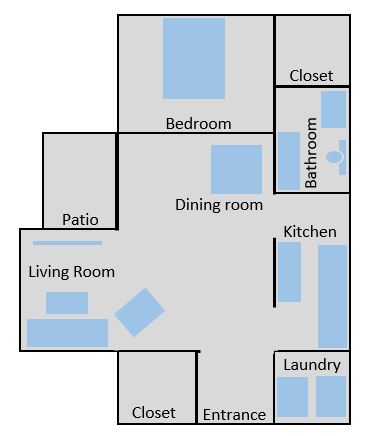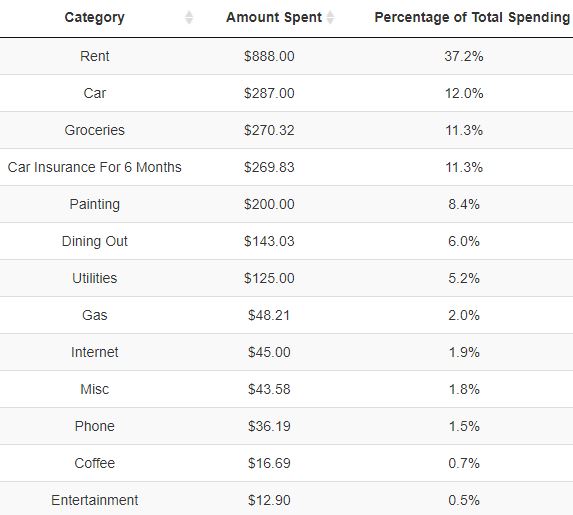
4 min read
“The secret of happiness, you see, is not found in seeking more, but in developing the capacity to enjoy less.” -Socrates
In a fascinating 2012 study on how American families use their homes, UCLA researchers found that a typical family spends most of their time in either the kitchen or the family room. They found that many rooms often go completely unused like guest bedrooms and dining rooms.
In addition, researchers found that children spent less than 40 minutes per week, on average, in the backyard. And parents spent less than 15 minutes per week in the backyard!
“Most time at home was spent indoors, despite a profusion of backyard pools, hot tubs, swing sets and outdoor furniture.”
In one example, researchers tracked the location of each parent and child on the first floor of their house every 10 minutes over two weekday afternoons and evenings.
According to the study:
“The researchers found that 68% of the family’s time was spent either in the kitchen or in the family room, near the TV and computer.”
The diagram below shows where members of the family were during each 10-minute interval:

Notice how the dining room is basically untouched and the porch is never used. Even the living room is only used sparsely. In total, the unused parts of the house accounted for nearly 75% of the home’s square footage.
My initial reaction to this study was “How wasteful of that family. Look at all that unused space!” But before I criticize, perhaps I should analyze how I’m using the rooms in my own apartment.
So, that’s what I did.
Tracking My Own Apartment Usage
I decided to replicate the ULCA study in my own apartment. I tracked my location every ten minutes during two weekdays from the time I got home from work (~ 4:30pm) to the time I went to bed (~10:30pm) to find out where I spend most of my time.
For some context, I live in a 780 square foot one bed/one bath apartment. Here’s the layout:

To track where I was, I set my phone to beep every ten minutes and typed where I was in my apartment each time it beeped. Then, I plotted my results.
Each red dot in the visual below marks my location during each ten minute interval:

I spent the majority of my time in either the kitchen, the living room, or the dining room. I spent some time in the bathroom and some time in my bedroom mostly reading for 40-50 minutes before bed each night.
In general, I wasn’t too surprised when I plotted these results. Most days after work I have a pretty standard routine: I make something to eat in the kitchen, then sit at the dining table and mess around on my laptop for a while, then head to the living room to watch a movie, hang out with my girlfriend, or just sit and read, then head back to the kitchen for another meal at some point. The dots in the visual reflect this routine.
From the visual I can see that I do use most of the space in my apartment on a daily basis. Although I didn’t use the laundry room at all, I wouldn’t consider it useless space because I do use that room about once a week. The same applies to the patio – although I didn’t use it at all during these two days, I do use it during the summer almost every evening.
The one space I didn’t use at all that could be considered useless is the closet near the entrance of my apartment. That closet is completely empty because I just don’t have anything I need to put in it. Even the walk in closet attached to my bedroom is excessively large because I own very few clothes.
The other obvious piece of unused space is the area in between the kitchen, the dining room, and the living room. Since my apartment has an open layout, there aren’t any major walls separating these rooms so it’s just a big open space:

Although I didn’t use this open space for anything during the two days that I tracked my location, I do use it as a place to sit around in a huge circle and play board games when I have friends over. In that sense, it’s an area that I use for entertaining so it’s not a complete waste.
Lessons Learned
From tracking how I spent my time in my apartment, I learned that most of my space is being put to good use. I don’t have any rooms that sit empty most of the time, which is a good thing.
In general, I’m a believer in living in a fairly small place that suits my needs rather than renting a larger place that I don’t really need. By doing so, I’m able to save on my rent, which is my largest monthly expense by far.
Here’s a look at my expenses from last month:

Notice how rent accounts for nearly 40% of my total monthly expenses. By living in a smaller place than I can afford, I’m able to keep my total monthly spending fairly low. I’m then able to invest these additional savings and grow my net worth at a much quicker pace.
I’m also a big believer in hedonic adaptation. I think that no matter what type of house or apartment you live in, you get used to it very quickly. I think that if I lived in a 1,500 sq. ft. apartment and paid closer to $1,000 in monthly rent, I’d be just as accustomed to that living space.
Whether you choose to live small or large, it will become normal over time. Unfortunately, if you live in a large place with lots of unused space, you still have to make the rent payment on that space.
I encourage you to try this exercise yourself. Track where you actually spend time around your house or apartment. You might be surprised at what spaces go unused or are completely unnecessary.
- The Ad Revenue Grid - August 6, 2021
- Attract Money by Creating Value for a Specific Audience - July 13, 2021
- The 5-Hour Workday - March 26, 2021
Full Disclosure: Nothing on this site should ever be considered to be advice, research or an invitation to buy or sell any securities, please see my Terms & Conditions page for a full disclaimer.

Oh good, good, a map of Zach’s house for the eventual break in and visualization of how infrequently he could/could not be in each room ??
The thought occurred to me before how most garages end up as storage and no one uses the dining room unless there’s a TV or fridge nearby. We don’t use 75% of ours house so we decided to rent it out. The massive mcmansions are a total waste of literal space. But small homes never have the interior upgrades and amenities that big houses do.
I guess most people assume if you could afford it, you must want to super size it too.
I think renting out your unused space is an awesome way to monetize your house and use it as an asset. I imagine this is especially profitable in big cities!
I loved this post, especially as we are contemplating selling a house way too big for us now that our nest is empty of kids and dogs. From the photo, I was very curious how much time you’d reveal playing your harp, Zach! Lol
Haha I was wondering if someone would mention the harp in the cover photo! Unfortunately I don’t know how to play and have never tried. Glad you enjoyed this post, Lin! 🙂
This is exactly why my wife and I rent out a room in our house on Airbnb. Most homeowners have an extra room they deem the “guest room” and it basically gets used a handful of times per year. Way more efficient to actually use that space and monetize it.
That closet looks pretty big…put a mattress on the floor and Airbnb it? Monetize your closet?
Interesting idea to monetize that closet…you’re always hustling man!
Really interesting that you tracked your own usage! It’s true that sometimes open space is simply pleasing even if we don’t actively “use” it. Thanks for sharing your thoughts on that study.
Good point – open space can be pleasing even if you don’t use it on a regular basis. I also have vaulted ceilings in my living room, which is pretty unnecessary but I love how much bigger it makes the room feel so I don’t mind paying a little extra for it ($10/month specifically compared to a unit with no vaulted ceilings).